False Chanterelle / Summer / Autumn / Toxic
Welcome to an exploration where we unmask the hidden dangers of the False Chanterelle (Hygrophoropsis aurantiaca).
Join us as we venture into the world of mushrooms, where beauty can sometimes be deceiving. With its striking orange hue and resemblance to its edible counterpart, the False Chanterelle poses a risk that must not be overlooked. Learn to discern the subtle differences, delve into its preferred habitats, and understand the potential toxicity that lurks within.
Awareness and knowledge are key to safe foraging practices, and it is vital to recognise the risks associated with this mushroom. Brace yourself as we shed light on the true nature of the False Chanterelle, reminding us all of the importance of cautious exploration, accurate identification, and responsible foraging. Let this be a reminder that in the world of mushrooms, looks can indeed be deceiving, and it is our responsibility to navigate the terrain with informed caution.
Description
A fairly common mushroom especially in the north of the UK, they are often mistaken for the much prized Chanterelle (Cantharellus Cibarius). Not deadly toxic but one to avoid. Annoyingly they grow exactly where you’ll be finding Chanterelle mushrooms and from a distance look quite similar, I’ve found myself getting excited to see one in the distance to discover it’s a false Chanterelle on getting closer. Needless to say I’ve kicked one or two of these mushrooms in the past 🙂
Scientific Name
Hygrophoropsis Aurantiaca
Common Names
False Chanterelle
Family
Hygrophoropsidaceae
Habitat
They are saprotrophic, feeding on leaf litter and dead wood. They are most often found in coniferous forests but do also appear with deciduous trees. They’re also occasionally found on heath land.
Video of Foraging False Chanterelle Mushrooms
Identifying Features:
Cap:
They have a golden/orange coloured cap that is convex when young but becomes more funnel-shaped with age. They tend to always have an in-rolled edge that gets more pronounced as they age. The flesh inside is of a similar colour to the cap, never white.
Stem:
The stem is a similar colour to the cap, quite thin, they tend to get more bulbous and darker in colour towards the base. It’s the same colour yellow/orange in the centre
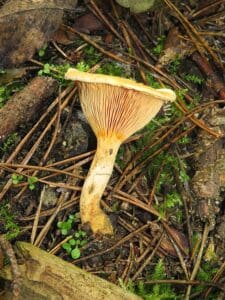
Gills:
The gills are true, decurrent, forked and crowded. They have a more intense golden/orange colour than the cap or stem.
Smell:
Mild mushroomy.
Spores:
White.
Known hazards:
Although not thought to be seriously toxic it has been known to cause some alarming symptoms in some so its best avoided. They have been known to cause gastrointestinal issues and sickness in some. Others have also reported hallucinations as a result of eating this mushroom so it’s best avoided.
Potential lookalikes:
The most common lookalike would be the true Chanterelle (Cantharellus Cibarius). They do from a distance like very similar but are quite easy to tell apart on closer inspection. The Chanterelle has false gills that are more like folds and when it’s cut in half it has pure white flesh, they also have a lovely fruity/peachy/apricot scent whereas the False Chanterelle has a faint mushroomy smell and as true crowded, decurrent gills.



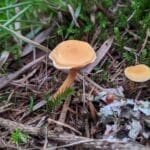
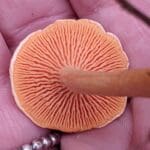
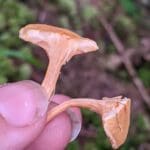
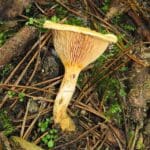
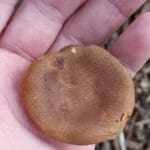
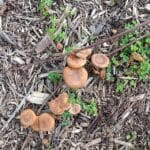
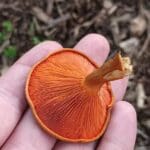
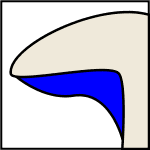



Leave a Reply
You must be logged in to post a comment.